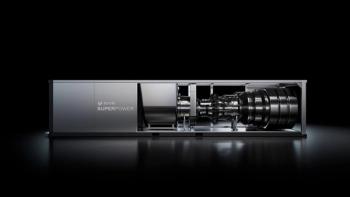
Video demo of gas turbine temperature measurement
Southside Thermal Sciences (STS) Ltd has successfully conducted a gas turbine engine test on its own Rolls-Royce VIPER 201 engine using its fully patented sensor coating technology to measure temperatures on-line. The work was conducted under the project ‘Sensor Coating System – SeCSy’ which is co-financed through the Technology Strategy Board (TSB) and is in cooperation with RWE npower, LAND Instruments and Cranfield University.
The VIPER gas turbine is owned by STS and has been specifically modified to enable optical access. Last week STS released three
The precision of the new system is equal to a commercial pyrometer tested in parallel. However, the new technology promises better accuracy of 5oC in harsh environments from remote locations. Classical temperature detection methods such as the use of thermocouples or pyrometers come with disadvantages specific to the gas turbine environment. Higher uncertainties in these methods
can result in lower operating temperatures in order to maintain a safety margin with the consequence of less efficient operation. STS’s sensor coating system provides an on-line monitoring tool which enables more accurate remote detection of temperature on and in the thermal barrier coating (TBC) – a key component in the hot gas path section of a modern gas turbine. This novel capability will lead to a reduction of temperature safety margins and thus to an increase in efficiency.
The technology combines the advances observed in the development of today’s high temperature protective coatings with the luminescence properties of ceramics used in TV screens or in energy efficient light bulbs. When illuminating the novel coating with UV light the coating starts phosphorescing and this phosphorescence can be used both to read temperature and detect evidence of ageing in the coating. The proof of the technology on an engine test bed includes production line sensor coatings and advanced robust optical detection hard- and software.
More recently STS discovered the phenomenon that past temperature exposure can be read out when the component is back to room temperature. The new ‘Thermal History Coating’ is now the subject of an international development programme and development partners are currently being gathered. For more information please go to
Newsletter
Power your knowledge with the latest in turbine technology, engineering advances, and energy solutions—subscribe to Turbomachinery International today.




